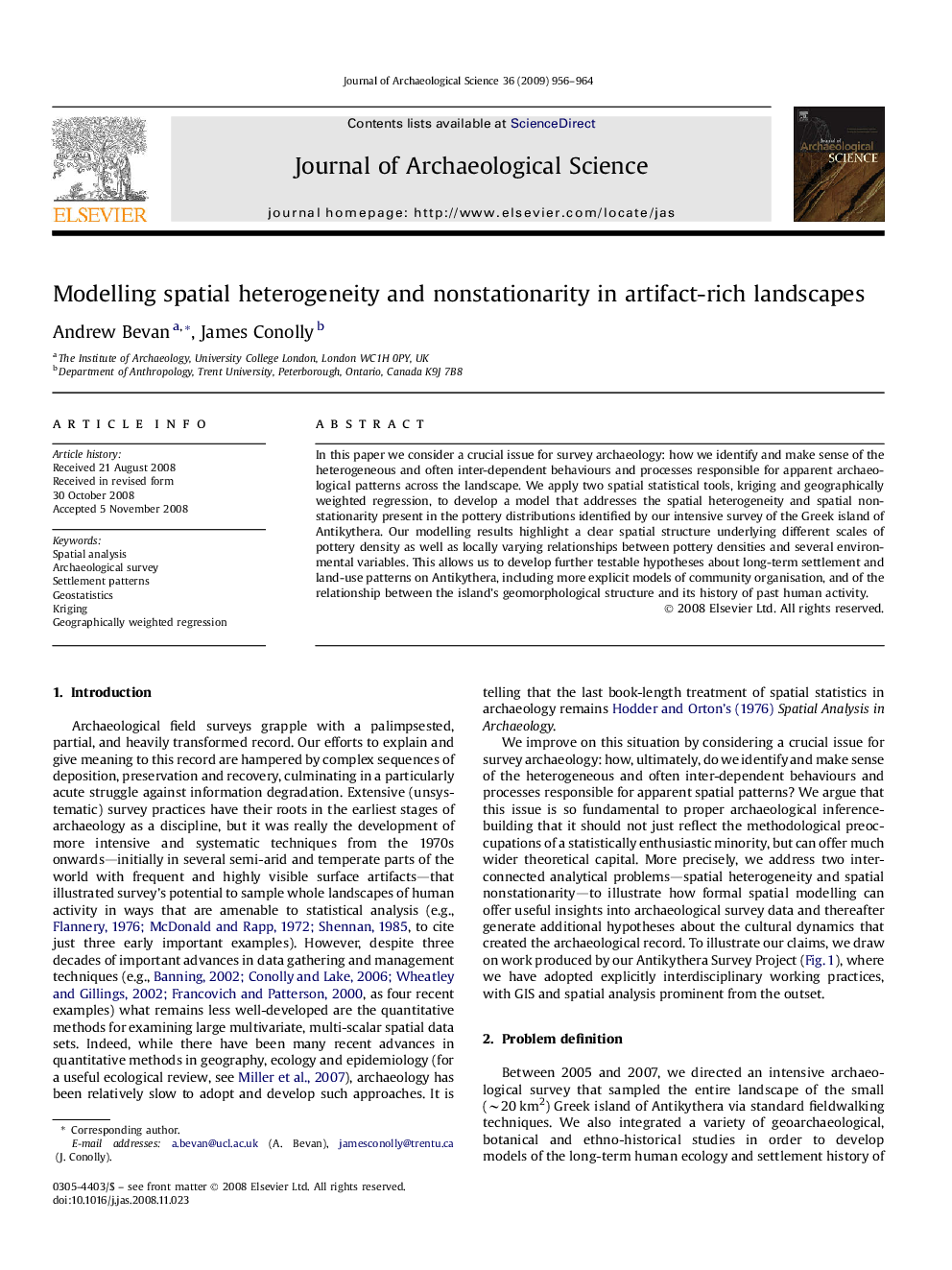| Article ID | Journal | Published Year | Pages | File Type |
|---|---|---|---|---|
| 1036664 | Journal of Archaeological Science | 2009 | 9 Pages |
In this paper we consider a crucial issue for survey archaeology: how we identify and make sense of the heterogeneous and often inter-dependent behaviours and processes responsible for apparent archaeological patterns across the landscape. We apply two spatial statistical tools, kriging and geographically weighted regression, to develop a model that addresses the spatial heterogeneity and spatial nonstationarity present in the pottery distributions identified by our intensive survey of the Greek island of Antikythera. Our modelling results highlight a clear spatial structure underlying different scales of pottery density as well as locally varying relationships between pottery densities and several environmental variables. This allows us to develop further testable hypotheses about long-term settlement and land-use patterns on Antikythera, including more explicit models of community organisation, and of the relationship between the island's geomorphological structure and its history of past human activity.
